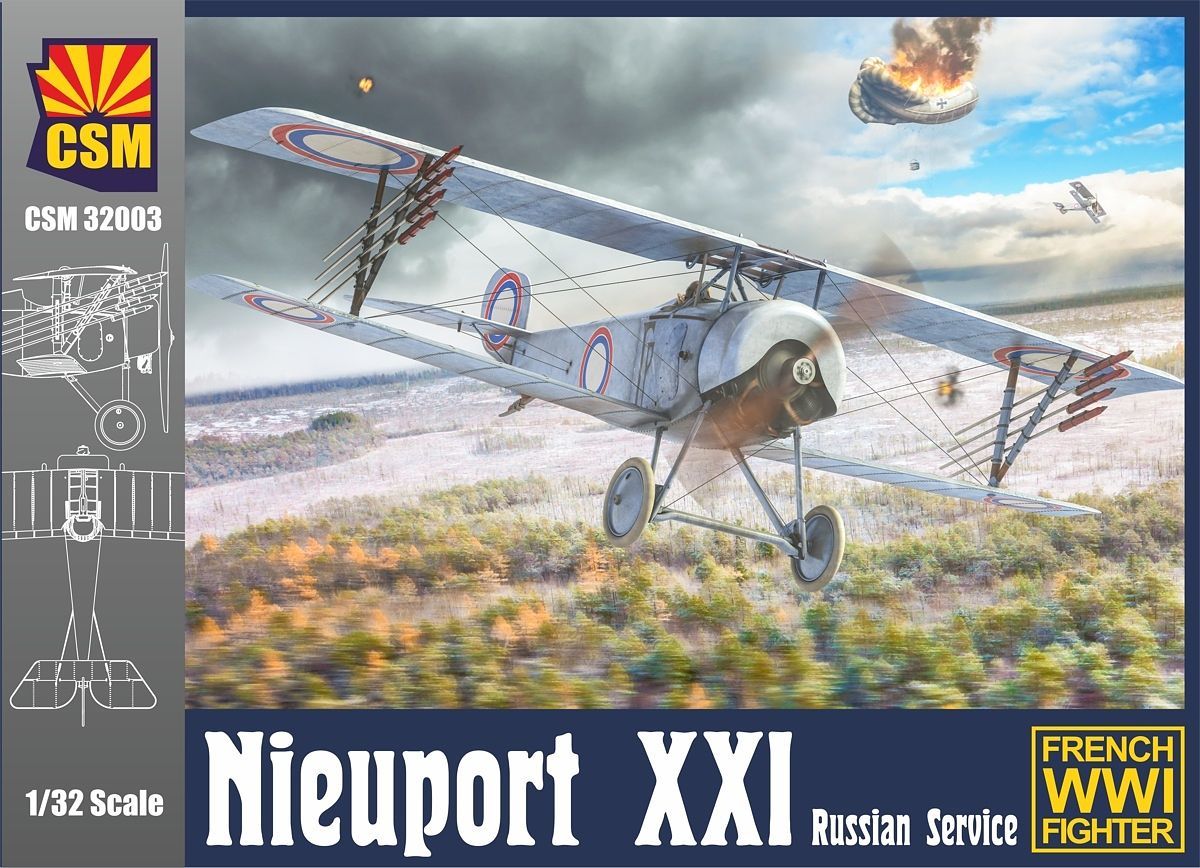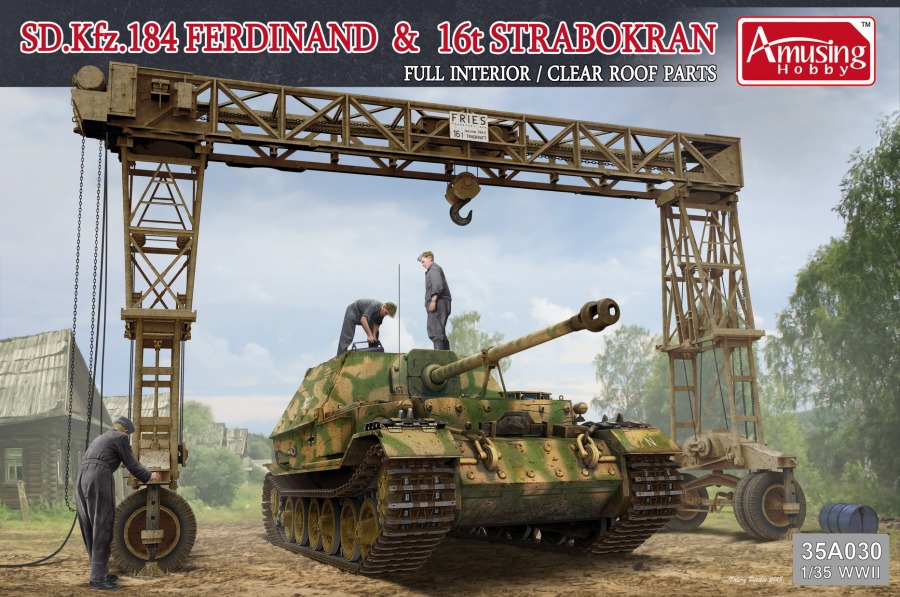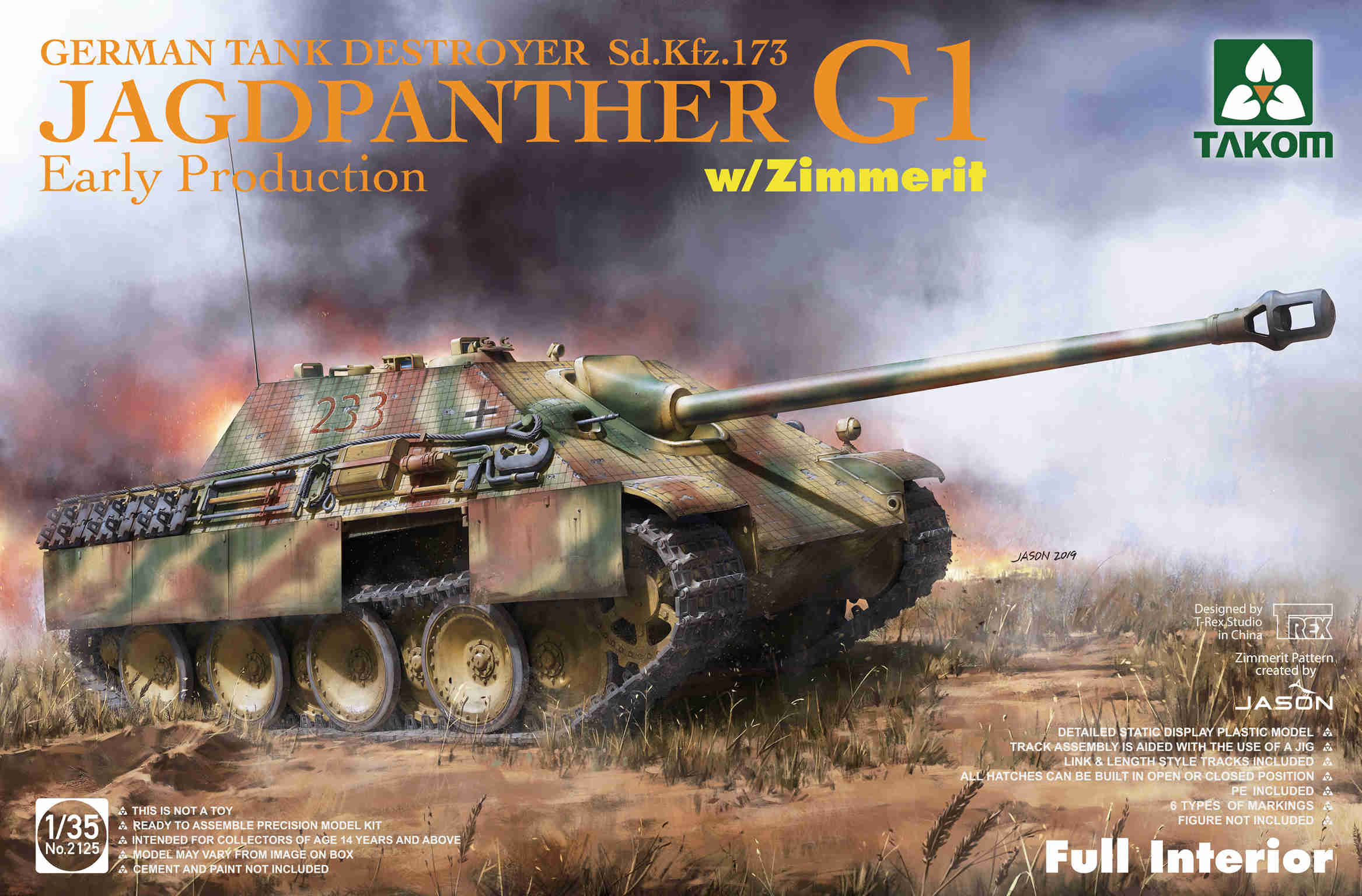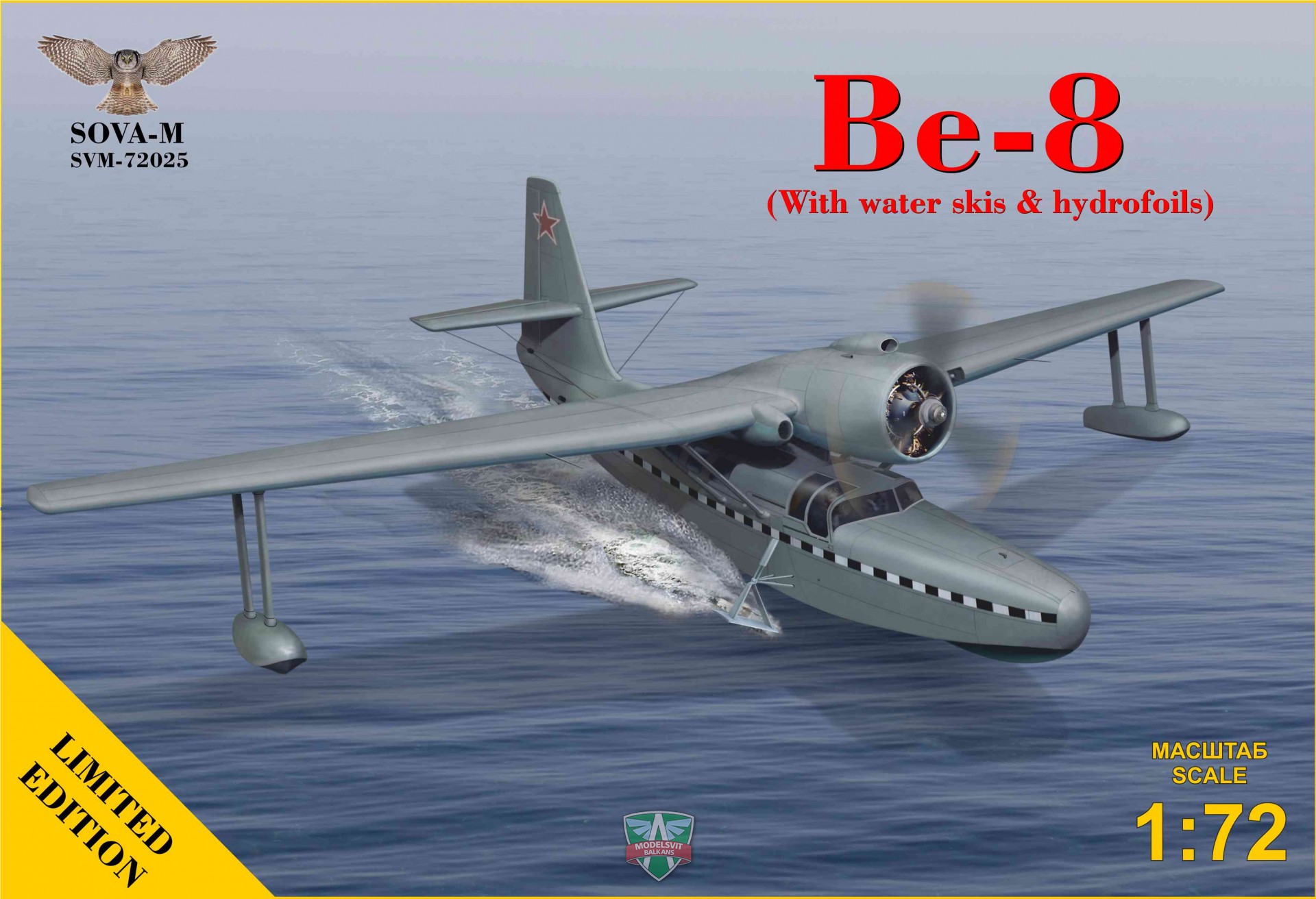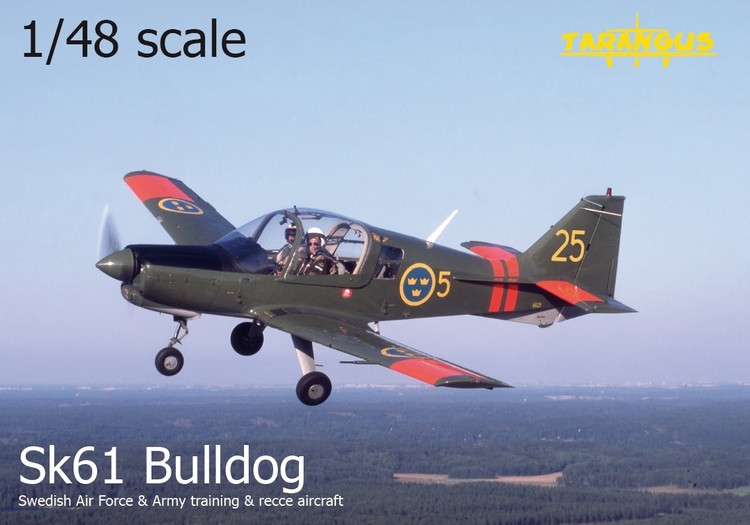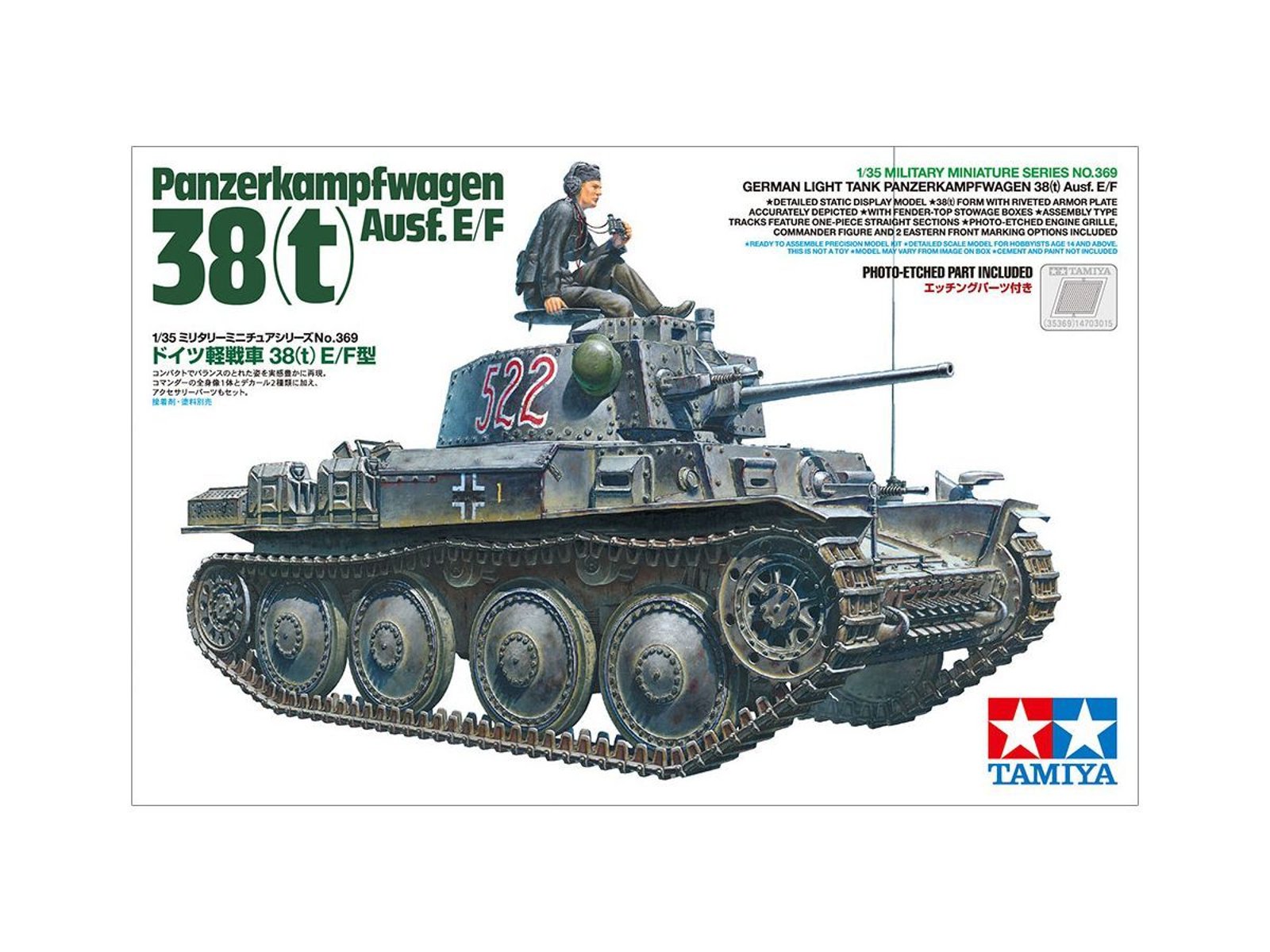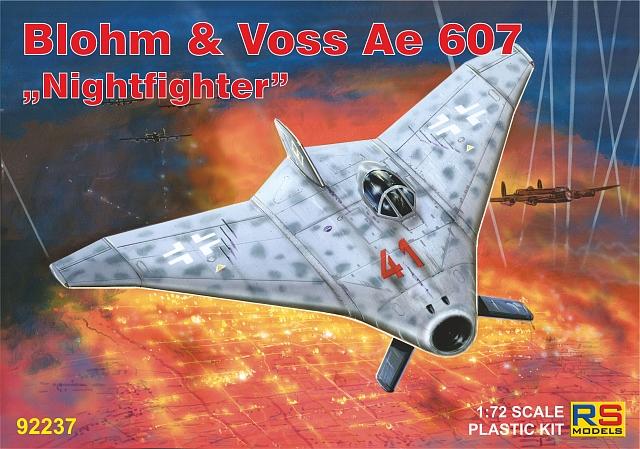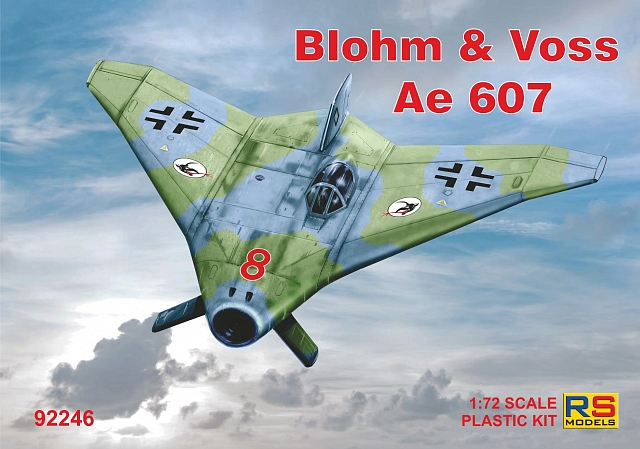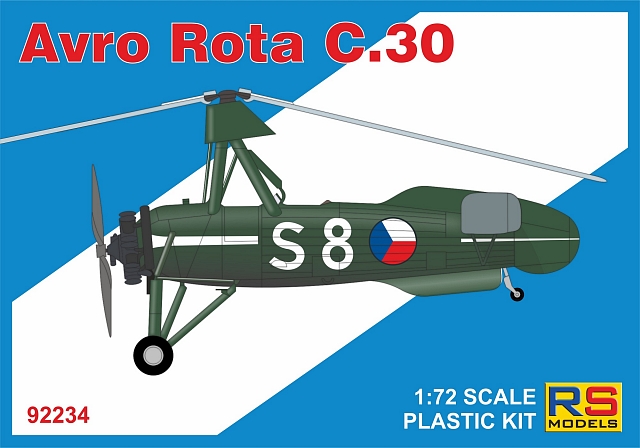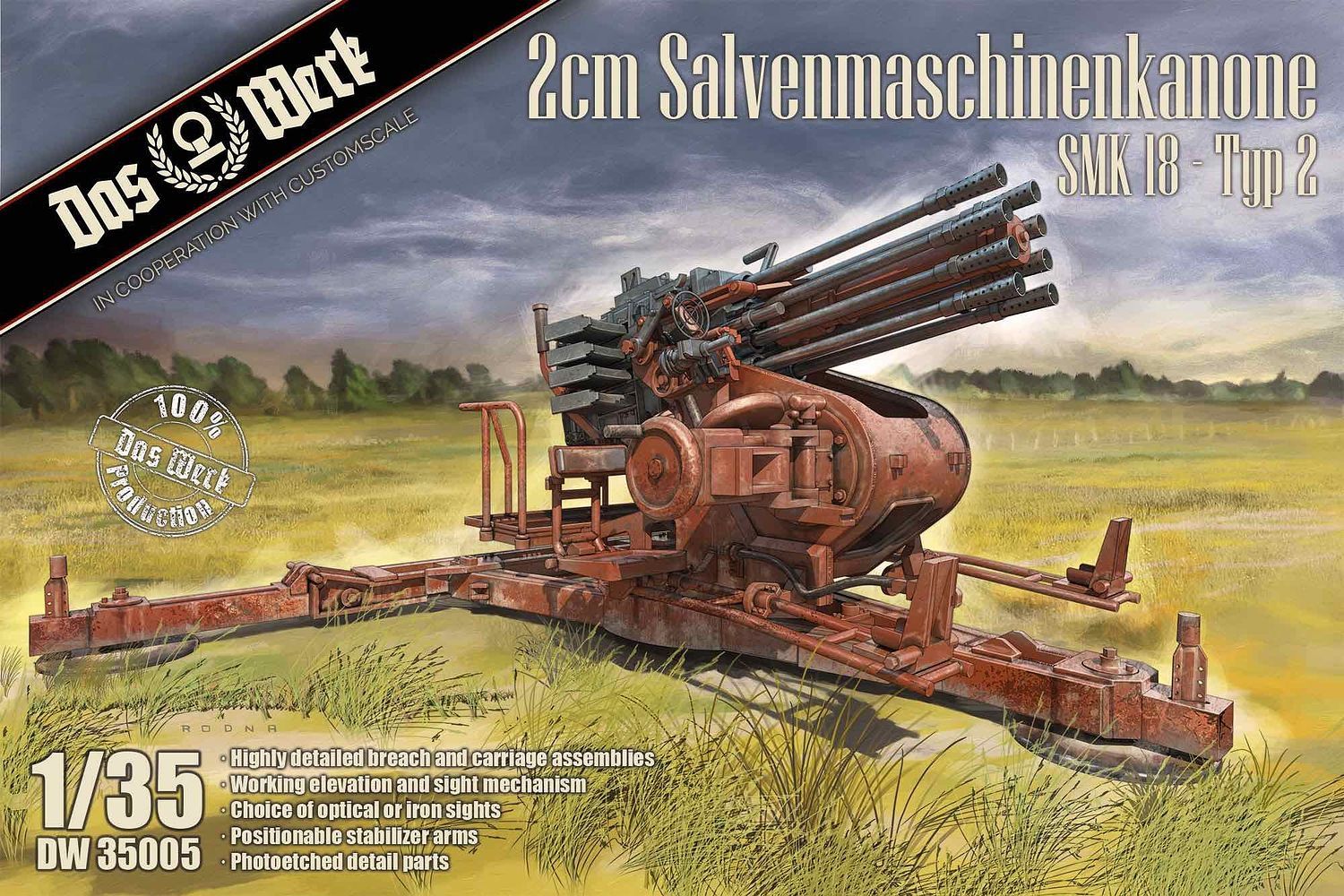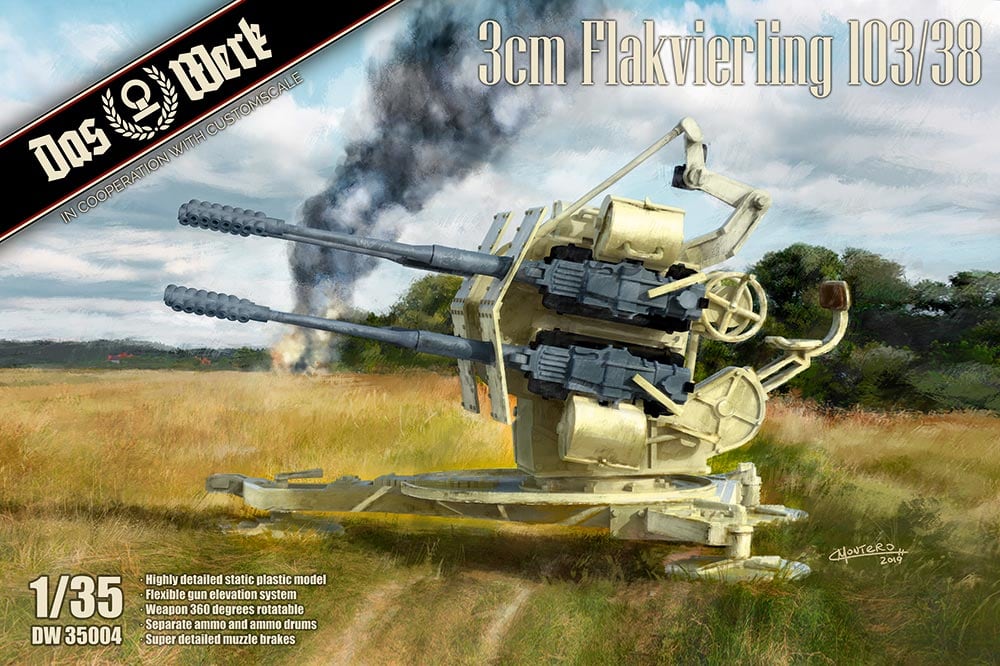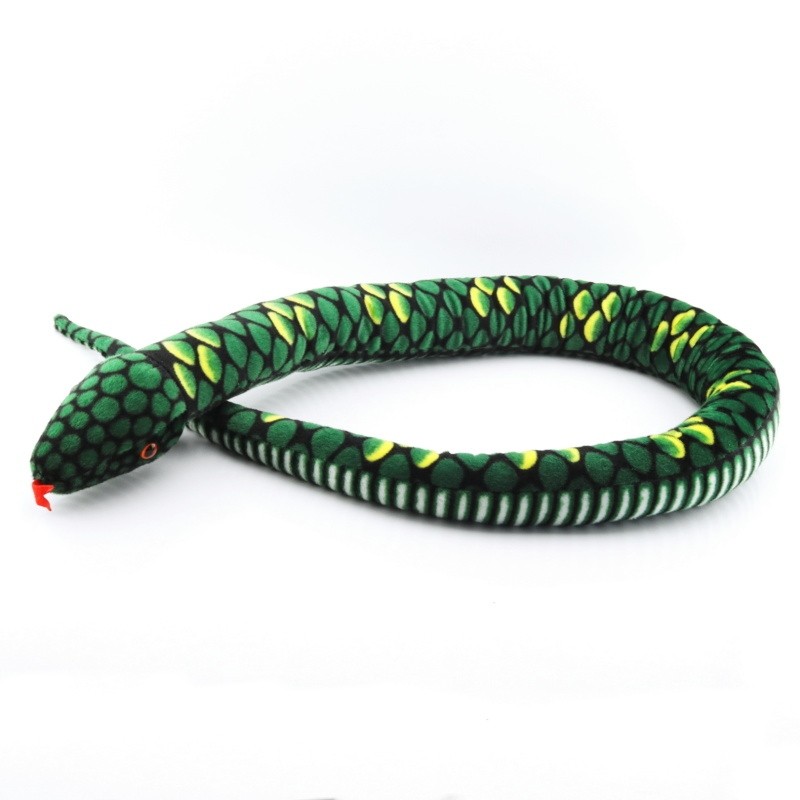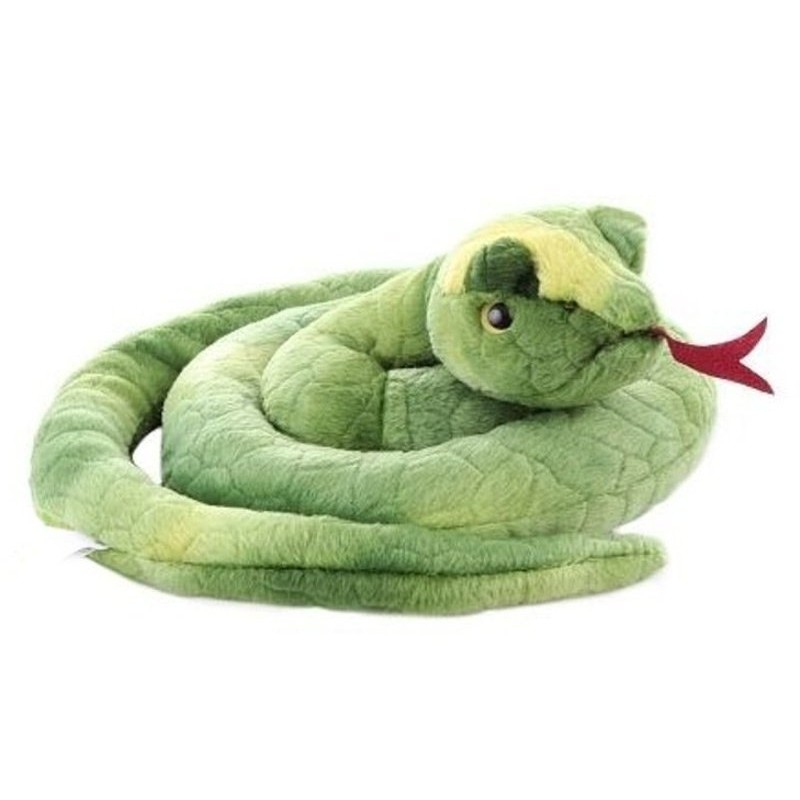Dětské zboží
Celkem 81 produktů
1/32 Nieuport XXI Russian Service. A french fighter, While it had a similar airframe to the Nieuport XVII, it was equipped with a less powerful Le Rhone 9C engine as it was originally intended as a long range escort fighter. It was also license manufactured in Russia by Dux Factory. CSM 1/32 plastic injection kit -6 plastic frets -Instruction in colour -Film for windscreen -PhotoEtch -Decals for 4 markings printed by Cartograf
1/32 Nieuport XXI Russian Service. A french fighter, While it had a similar airframe to the Nieuport XVII, it was equipped with a less powerful Le Rhone 9C engine as it was originally intended as a long range escort fighter. It was also license manufactured in Russia by Dux Factory. CSM 1/32 plastic injection kit -6 plastic frets -Instruction in colour -Film for windscreen -PhotoEtch -Decals for 4 markings printed by Cartograf
1/35 Sd.Kfz.184 Ferdinand & 16t Strabokran. DESCRIPTION This is an injection-plastic military vehicle model kit. From Amusing Hobby comes a 2-in-1 kit of the Ferdinand Jagdpanzer Sd.Kfz. 184 and 16t Strabokran! The characteristic feature of the Ferdinand was that it was generated by two gasoline engines and driven by an electric motor. By using a motor as the driving unit, no transmission was required. In the past, this vehicle was said to have a lot of breakdowns for this reason, but some recent documents have reported that there were fewer breakdowns than some vehicles equipped with transmissions. On the Eastern Front, the Ferdinand's appearance had a great impact. Strabokrans are gate-type mobile cranes used by German field maintenance teams during tank maintenance and repairs. About 100 units were manufactured and used in German armored divisions and heavy tank battalions. Kit features: The Ferdinand's interior layout can be enjoyed even after completion thanks to the included transparent parts. The kit recreates the precise details of the Strabokran, and it can assembled in its working state. [Mold Color]: Tan, brown [Includes]: Clear parts, photo-etched parts Release Date:Sep 2019 Item Size/Weight:39.8cm x 26.3cm x 19.5cm / 1680g
1/35 Sd.Kfz.184 Ferdinand & 16t Strabokran. DESCRIPTION This is an injection-plastic military vehicle model kit. From Amusing Hobby comes a 2-in-1 kit of the Ferdinand Jagdpanzer Sd.Kfz. 184 and 16t Strabokran! The characteristic feature of the Ferdinand was that it was generated by two gasoline engines and driven by an electric motor. By using a motor as the driving unit, no transmission was required. In the past, this vehicle was said to have a lot of breakdowns for this reason, but some recent documents have reported that there were fewer breakdowns than some vehicles equipped with transmissions. On the Eastern Front, the Ferdinand's appearance had a great impact. Strabokrans are gate-type mobile cranes used by German field maintenance teams during tank maintenance and repairs. About 100 units were manufactured and used in German armored divisions and heavy tank battalions. Kit features: The Ferdinand's interior layout can be enjoyed even after completion thanks to the included transparent parts. The kit recreates the precise details of the Strabokran, and it can assembled in its working state. [Mold Color]: Tan, brown [Includes]: Clear parts, photo-etched parts Release Date:Sep 2019 Item Size/Weight:39.8cm x 26.3cm x 19.5cm / 1680g
1/35 Sd.Kfz. 173 Pz.Jg. Jagdpanther. The Panzerjäger Panther Sd.Kfz. 173, or Jagdpanther, was a heavy tank destroyer based on the chassis of the Panzer V Panther and was armed with the same long-barreled 8.8 cm gun as the Tiger II or ‘King Tiger’, and a single 7.92 mm MG-34 machine gun in the front glacis plate for local defense. The Jagdpanther had a good power-to-weight ratio and a powerful main gun, which enabled it to destroy any Allied tank. Based on the existing Panther chassis, the vehicle did not suffer too many mechanical problems, and had an upgraded transmission and final drive to counter the Panther's main weakness. The Jagdpanther was powered by the 700hp Maybach HL230 P30 V-12 petrol engine and a 7 speed forward, 1-speed reverse transmission system with a maximum speed of 46 km/h (28.6 mph) and a range of about 200 kilometers (99 miles). It was manned by a crew of five: a driver, radio-operator, commander, gunner and a loader. Two main variants can be distinguished, the earlier (1944 model) G1 with a small internally-bolted main gun mantlet and a modified Panther A engine deck, and the later (1945 model) G2 with a larger, externally-bolted mantlet and a modified Panther G engine deck, though late G1s also had a larger mantlet. Early Jagdpanthers had two vision openings for the driver, whereas late versions had only one. The main gun originally had a monobloc gun barrel, but later versions were equipped with the PaK 43/4 gun with a two-part barrel. Early G1s (to September 1944) were given a distinctive pattern of Zimmerit anti-magnetic mine coating.
1/35 Sd.Kfz. 173 Pz.Jg. Jagdpanther. The Panzerjäger Panther Sd.Kfz. 173, or Jagdpanther, was a heavy tank destroyer based on the chassis of the Panzer V Panther and was armed with the same long-barreled 8.8 cm gun as the Tiger II or ‘King Tiger’, and a single 7.92 mm MG-34 machine gun in the front glacis plate for local defense. The Jagdpanther had a good power-to-weight ratio and a powerful main gun, which enabled it to destroy any Allied tank. Based on the existing Panther chassis, the vehicle did not suffer too many mechanical problems, and had an upgraded transmission and final drive to counter the Panther's main weakness. The Jagdpanther was powered by the 700hp Maybach HL230 P30 V-12 petrol engine and a 7 speed forward, 1-speed reverse transmission system with a maximum speed of 46 km/h (28.6 mph) and a range of about 200 kilometers (99 miles). It was manned by a crew of five: a driver, radio-operator, commander, gunner and a loader. Two main variants can be distinguished, the earlier (1944 model) G1 with a small internally-bolted main gun mantlet and a modified Panther A engine deck, and the later (1945 model) G2 with a larger, externally-bolted mantlet and a modified Panther G engine deck, though late G1s also had a larger mantlet. Early Jagdpanthers had two vision openings for the driver, whereas late versions had only one. The main gun originally had a monobloc gun barrel, but later versions were equipped with the PaK 43/4 gun with a two-part barrel. Early G1s (to September 1944) were given a distinctive pattern of Zimmerit anti-magnetic mine coating.
1/72 BHU-6B / UF-2 "Albatross" (Japan Maritime Self-Defense Force). The Beriev Be-8 (USAF/DoD reporting name “Type 33”, NATO reporting name “Mole”), was built by the Soviet Beriev OKB in 1947. It was a passenger/liaison amphibian aircraft with a layout similar to the Be-4 but substantially larger and heavier. It was a single engine parasol with the wing installed on a thin pylon and a pair of short struts. Compared to the Be-4, the Be-8 was equipped with retractable landing gear, and pilot and passenger cabins had heating utilizing engine heat. The Be-8 was intended as a civil aircraft and carried no armament. First flight was on December 3, demonstrating good performance. Two experimental aircraft were built, and one was demonstrated during 1951 Soviet Aviation Day at Tushino.One of Be-8 was equipped with hydrofoils, developed at TsAGI. These “Underwater Wings” were installed on landing gear struts and pushed aircraft above the water well before it could be done by the wing lift force. As a result, takeoff was much easier and imposed less punishment on the hull from the waves. Despite very effective during takeoff hydrofoils had negative impact on flight speed. Construction of retractable hydrofoils was not ready, and the concept did not find practical applications.
1/72 BHU-6B / UF-2 "Albatross" (Japan Maritime Self-Defense Force). The Beriev Be-8 (USAF/DoD reporting name “Type 33”, NATO reporting name “Mole”), was built by the Soviet Beriev OKB in 1947. It was a passenger/liaison amphibian aircraft with a layout similar to the Be-4 but substantially larger and heavier. It was a single engine parasol with the wing installed on a thin pylon and a pair of short struts. Compared to the Be-4, the Be-8 was equipped with retractable landing gear, and pilot and passenger cabins had heating utilizing engine heat. The Be-8 was intended as a civil aircraft and carried no armament. First flight was on December 3, demonstrating good performance. Two experimental aircraft were built, and one was demonstrated during 1951 Soviet Aviation Day at Tushino.One of Be-8 was equipped with hydrofoils, developed at TsAGI. These “Underwater Wings” were installed on landing gear struts and pushed aircraft above the water well before it could be done by the wing lift force. As a result, takeoff was much easier and imposed less punishment on the hull from the waves. Despite very effective during takeoff hydrofoils had negative impact on flight speed. Construction of retractable hydrofoils was not ready, and the concept did not find practical applications.
1/72 Be-8 passenger amphibian aircraft. The Beriev Be-8 (USAF/DoD reporting name “Type 33”, NATO reporting name “Mole”), was built by the Soviet Beriev OKB in 1947. It was a passenger/liaison amphibian aircraft with a layout similar to the Be-4 but substantially larger and heavier. It was a single engine parasol with the wing installed on a thin pylon and a pair of short struts. Compared to the Be-4, the Be-8 was equipped with retractable landing gear, and pilot and passenger cabins had heating utilizing engine heat. The Be-8 was intended as a civil aircraft and carried no armament. First flight was on December 3, demonstrating good performance. Two experimental aircraft were built, and one was demonstrated during 1951 Soviet Aviation Day at Tushino.One of Be-8 was equipped with hydrofoils, developed at TsAGI. These “Underwater Wings” were installed on landing gear struts and pushed aircraft above the water well before it could be done by the wing lift force. As a result, takeoff was much easier and imposed less punishment on the hull from the waves. Despite very effective during takeoff hydrofoils had negative impact on flight speed. Construction of retractable hydrofoils was not ready, and the concept did not find practical applications.
1/72 Be-8 passenger amphibian aircraft. The Beriev Be-8 (USAF/DoD reporting name “Type 33”, NATO reporting name “Mole”), was built by the Soviet Beriev OKB in 1947. It was a passenger/liaison amphibian aircraft with a layout similar to the Be-4 but substantially larger and heavier. It was a single engine parasol with the wing installed on a thin pylon and a pair of short struts. Compared to the Be-4, the Be-8 was equipped with retractable landing gear, and pilot and passenger cabins had heating utilizing engine heat. The Be-8 was intended as a civil aircraft and carried no armament. First flight was on December 3, demonstrating good performance. Two experimental aircraft were built, and one was demonstrated during 1951 Soviet Aviation Day at Tushino.One of Be-8 was equipped with hydrofoils, developed at TsAGI. These “Underwater Wings” were installed on landing gear struts and pushed aircraft above the water well before it could be done by the wing lift force. As a result, takeoff was much easier and imposed less punishment on the hull from the waves. Despite very effective during takeoff hydrofoils had negative impact on flight speed. Construction of retractable hydrofoils was not ready, and the concept did not find practical applications.
1/72 Be-8 amphibian aircraft (with water skis & hydrofoils). The Beriev Be-8 (USAF/DoD reporting name “Type 33”, NATO reporting name “Mole”), was built by the Soviet Beriev OKB in 1947. It was a passenger/liaison amphibian aircraft with a layout similar to the Be-4 but substantially larger and heavier. It was a single engine parasol with the wing installed on a thin pylon and a pair of short struts. Compared to the Be-4, the Be-8 was equipped with retractable landing gear, and pilot and passenger cabins had heating utilizing engine heat. The Be-8 was intended as a civil aircraft and carried no armament. First flight was on December 3, demonstrating good performance. Two experimental aircraft were built, and one was demonstrated during 1951 Soviet Aviation Day at Tushino.One of Be-8 was equipped with hydrofoils, developed at TsAGI. These “Underwater Wings” were installed on landing gear struts and pushed aircraft above the water well before it could be done by the wing lift force. As a result, takeoff was much easier and imposed less punishment on the hull from the waves. Despite very effective during takeoff hydrofoils had negative impact on flight speed. Construction of retractable hydrofoils was not ready, and the concept did not find practical applications.
1/72 Be-8 amphibian aircraft (with water skis & hydrofoils). The Beriev Be-8 (USAF/DoD reporting name “Type 33”, NATO reporting name “Mole”), was built by the Soviet Beriev OKB in 1947. It was a passenger/liaison amphibian aircraft with a layout similar to the Be-4 but substantially larger and heavier. It was a single engine parasol with the wing installed on a thin pylon and a pair of short struts. Compared to the Be-4, the Be-8 was equipped with retractable landing gear, and pilot and passenger cabins had heating utilizing engine heat. The Be-8 was intended as a civil aircraft and carried no armament. First flight was on December 3, demonstrating good performance. Two experimental aircraft were built, and one was demonstrated during 1951 Soviet Aviation Day at Tushino.One of Be-8 was equipped with hydrofoils, developed at TsAGI. These “Underwater Wings” were installed on landing gear struts and pushed aircraft above the water well before it could be done by the wing lift force. As a result, takeoff was much easier and imposed less punishment on the hull from the waves. Despite very effective during takeoff hydrofoils had negative impact on flight speed. Construction of retractable hydrofoils was not ready, and the concept did not find practical applications.
Stavebnice LEGO Ninjago Ninja Dragon Temple (71759) obsahuje celkem 161 dílků, jejichž zpracování a tématiku ocení nejenom malí stavitelé, ale také obávaní nindžové a zarputilí bojovníci od 4 let. Nechá totiž ožít oblíbené postavy a místa z veleúspěšné série hraček Ninjago, podle které byl natočený stejnojmenný TV seriál. Fanoušci nindžů se tak ponoří do zábavných soubojů Kaie a Nyi s prohnaným hadem (v originále Sneaky Snake) a kobřím mechanikem (Cobra Mechanic), díky čemuž prožijí nezapomenutelné seriálové scény na vlastní kůži nebo si sami vytvoří naprosto ojedinělé herní scénáře dle vlastní fantazie. Součástí této hrací sady jsou také různorodé zbraně, dopravní prostředky a akční figurka draka s pohyblivou hlavou, ocasem a křídly, kterou mohou malé děti rychle a snadno sestavit pomocí dodávané začátečnické kostky. Hlavní přednosti Stavebnice LEGO pro všechny fanoušky nindžů od 4 let Sérii hraček Ninjago se objevila na TV obrazovkách Sada obsahuje celkem 161 různotvarých dílků 4 figurky – Kai, Nya, Sneaky Snake a Cobra Mechanic 23cm drak s pohyblivou hlavou, ocasem a křídly V sadě nechybí modely zbraní a dopravních prostředků Snadné sestavení díky dodávané začátečnické kostce Děti mohou naživo prožívat oblíbené seriálové scény Zároveň si mohou vytvářet vlastní herní scénáře Hračka stimuluje představivost a schopnost plánování Rozvíjí tvůrčí a stavitelské dovednosti Procvičí smyslové vnímání a jemnou motoriku Motivuje ke samostatnosti a k překonávání překážek Děti získají zdravou sebedůvěru a urputné odhodlání Rozvoj hrou Stavebnice přirozenou cestou podněcuje k procvičování smyslového vnímání a jemné motoriky a rovněž podporuje představivost, tvůrčí a stavitelské dovednosti i schopnost plánování velkých projektů. Umožní dětské mysli přemýšlet více dopředu a do hloubky zkoumat vytvořené prostředí i další detaily stavby. Hračka naučí najít vždy správné řešení a motivuje děti k větší samostatnosti během tvoření. Díky tomu získají zdravou sebedůvěru a urputné odhodlání, což jim zásadně pomůže na jejich cestě životem. Digitální pomocník Oficiální bezplatná aplikace LEGO Návody na stavění je vhodná pro chytrá zařízení s operačním systémem Android nebo iOS. Představuje fantastického digitálního pomocníka, který vám poskytne celou řadu praktických vychytávek a technologických vymožeností. Můžete snadno prohledávat aktuální katalogy společnosti nebo pomocí QR kódů na krabici ukládat návody k vašim stavebnicím LEGO do svého smartphonu či tabletu k pozdějšímu použití. Dále u vybraných herních sad nabízí pokročilou funkci Instructions PLUS s 3D modely, se kterou plně prozkoumáte jednotlivé dílky stavebnice od A až do Z, což maximálně usnadní následnou stavbu. Specifikace Výrobce: LEGO Kolekce: Ninjago Model: Ninja Dragon Temple CZ název: Dračí chrám nindžů Určení: stavebnice Doporučený věk: 4+ Celkový počet dílků: 161 ks Fyzické vlastnosti Barva: různobarevná Materiál: plast Čistá hmotnost: 390 g Hmotnost balení: 490 g Rozměry balení (Š x V x H): 28,2 x 26,2 x 5,9 cm Obsah balení 1x dílky pro Dračí chrám nindžů 1x postavička Kaie 1x postavička Nyi 1x figurka Sneaky Snake 1x figurka Cobra Mechanic 1x 23cm dračí hračka 1x dílky na motorku 1x dílky pro katapult 4x vyměnitelná ruční zbraň 1x začátečnická kostka 1x ilustrovaný návod s instrukcemi
Rodinná hra o stavění mýtických opeřených hadů. Blíží se jmenování nového aztéckého velekněze. Aby uchazeči o pozici dokázali své zásluhy, účastní se prestižního turnaje, při kterém musí na bohy náležitě zapůsobit. Kýžený titul aztéckého velekněze získá ten, kdo dokáže vytvořit ty nejsložitější a nejelegantnější sochy cóatla (opeřeného hada). Hráči se snaží získat co nejvíce bodů prestiže vytvářením nejhodnotnějších soch cóatlů. Hráč, který získá nejvíce bodů prestiže, se stává vítězem. Během hry hráči vytvářejí cóatly spojováním dílků hlav, těl a ocasů tak, aby vyhověli požadavkům karet proroctví, která si přejí naplnit. Čím více požadavkům karet proroctví cóatl vyhoví, tím více bodů prestiže přinese. Cóatl může také přinést bonusové body prestiže, pokud vyhoví požadavkům jedné z karet chrámů. Ukončení hry začne v okamžiku, kdy některý z hráčů dokončí svého třetího cóatla, pokud dojde k vyčerpání zásoby dílků těl. Specifikace Výrobce: Synapses Games Vhodné pro děti: 10+ Doba hraní: 30-60 minut Počet hráčů: 1-4 Hmotnost balení: 0,95 kg Rozměry balení (Š x V x H): 26 x 26 x 7 cm Obsah balení 54 karet proroctví 15 karet chrámů 1 panel zásob / bodování 4 hráčské panely 150 dílků cóatla (15 ocasů, 15 hlav, 120 částí těla) 12 žetonů obětí 1 žeton prvního hráče 3 sáčky na zásoby
Rodinná hra o stavění mýtických opeřených hadů. Blíží se jmenování nového aztéckého velekněze. Aby uchazeči o pozici dokázali své zásluhy, účastní se prestižního turnaje, při kterém musí na bohy náležitě zapůsobit. Kýžený titul aztéckého velekněze získá ten, kdo dokáže vytvořit ty nejsložitější a nejelegantnější sochy cóatla (opeřeného hada). Hráči se snaží získat co nejvíce bodů prestiže vytvářením nejhodnotnějších soch cóatlů. Hráč, který získá nejvíce bodů prestiže, se stává vítězem. Během hry hráči vytvářejí cóatly spojováním dílků hlav, těl a ocasů tak, aby vyhověli požadavkům karet proroctví, která si přejí naplnit. Čím více požadavkům karet proroctví cóatl vyhoví, tím více bodů prestiže přinese. Cóatl může také přinést bonusové body prestiže, pokud vyhoví požadavkům jedné z karet chrámů. Ukončení hry začne v okamžiku, kdy některý z hráčů dokončí svého třetího cóatla, pokud dojde k vyčerpání zásoby dílků těl.
1/72 KDA-2 type 88-2 scout. The Beriev Be-8 (USAF/DoD reporting name “Type 33”, NATO reporting name “Mole”), was built by the Soviet Beriev OKB in 1947. It was a passenger/liaison amphibian aircraft with a layout similar to the Be-4 but substantially larger and heavier. It was a single engine parasol with the wing installed on a thin pylon and a pair of short struts. Compared to the Be-4, the Be-8 was equipped with retractable landing gear, and pilot and passenger cabins had heating utilizing engine heat. The Be-8 was intended as a civil aircraft and carried no armament. First flight was on December 3, demonstrating good performance. Two experimental aircraft were built, and one was demonstrated during 1951 Soviet Aviation Day at Tushino.One of Be-8 was equipped with hydrofoils, developed at TsAGI. These “Underwater Wings” were installed on landing gear struts and pushed aircraft above the water well before it could be done by the wing lift force. As a result, takeoff was much easier and imposed less punishment on the hull from the waves. Despite very effective during takeoff hydrofoils had negative impact on flight speed. Construction of retractable hydrofoils was not ready, and the concept did not find practical applications.
1/72 KDA-2 type 88 light bomber. The Beriev Be-8 (USAF/DoD reporting name “Type 33”, NATO reporting name “Mole”), was built by the Soviet Beriev OKB in 1947. It was a passenger/liaison amphibian aircraft with a layout similar to the Be-4 but substantially larger and heavier. It was a single engine parasol with the wing installed on a thin pylon and a pair of short struts. Compared to the Be-4, the Be-8 was equipped with retractable landing gear, and pilot and passenger cabins had heating utilizing engine heat. The Be-8 was intended as a civil aircraft and carried no armament. First flight was on December 3, demonstrating good performance. Two experimental aircraft were built, and one was demonstrated during 1951 Soviet Aviation Day at Tushino.One of Be-8 was equipped with hydrofoils, developed at TsAGI. These “Underwater Wings” were installed on landing gear struts and pushed aircraft above the water well before it could be done by the wing lift force. As a result, takeoff was much easier and imposed less punishment on the hull from the waves. Despite very effective during takeoff hydrofoils had negative impact on flight speed. Construction of retractable hydrofoils was not ready, and the concept did not find practical applications.
1/72 KDA-2 type 88-1 scout. The Beriev Be-8 (USAF/DoD reporting name “Type 33”, NATO reporting name “Mole”), was built by the Soviet Beriev OKB in 1947. It was a passenger/liaison amphibian aircraft with a layout similar to the Be-4 but substantially larger and heavier. It was a single engine parasol with the wing installed on a thin pylon and a pair of short struts. Compared to the Be-4, the Be-8 was equipped with retractable landing gear, and pilot and passenger cabins had heating utilizing engine heat. The Be-8 was intended as a civil aircraft and carried no armament. First flight was on December 3, demonstrating good performance. Two experimental aircraft were built, and one was demonstrated during 1951 Soviet Aviation Day at Tushino.One of Be-8 was equipped with hydrofoils, developed at TsAGI. These “Underwater Wings” were installed on landing gear struts and pushed aircraft above the water well before it could be done by the wing lift force. As a result, takeoff was much easier and imposed less punishment on the hull from the waves. Despite very effective during takeoff hydrofoils had negative impact on flight speed. Construction of retractable hydrofoils was not ready, and the concept did not find practical applications.
1/72 KDA-2 type 88 light bomber. The Beriev Be-8 (USAF/DoD reporting name “Type 33”, NATO reporting name “Mole”), was built by the Soviet Beriev OKB in 1947. It was a passenger/liaison amphibian aircraft with a layout similar to the Be-4 but substantially larger and heavier. It was a single engine parasol with the wing installed on a thin pylon and a pair of short struts. Compared to the Be-4, the Be-8 was equipped with retractable landing gear, and pilot and passenger cabins had heating utilizing engine heat. The Be-8 was intended as a civil aircraft and carried no armament. First flight was on December 3, demonstrating good performance. Two experimental aircraft were built, and one was demonstrated during 1951 Soviet Aviation Day at Tushino.One of Be-8 was equipped with hydrofoils, developed at TsAGI. These “Underwater Wings” were installed on landing gear struts and pushed aircraft above the water well before it could be done by the wing lift force. As a result, takeoff was much easier and imposed less punishment on the hull from the waves. Despite very effective during takeoff hydrofoils had negative impact on flight speed. Construction of retractable hydrofoils was not ready, and the concept did not find practical applications.
1/72 KDA-2 type 88-1 scout. The Beriev Be-8 (USAF/DoD reporting name “Type 33”, NATO reporting name “Mole”), was built by the Soviet Beriev OKB in 1947. It was a passenger/liaison amphibian aircraft with a layout similar to the Be-4 but substantially larger and heavier. It was a single engine parasol with the wing installed on a thin pylon and a pair of short struts. Compared to the Be-4, the Be-8 was equipped with retractable landing gear, and pilot and passenger cabins had heating utilizing engine heat. The Be-8 was intended as a civil aircraft and carried no armament. First flight was on December 3, demonstrating good performance. Two experimental aircraft were built, and one was demonstrated during 1951 Soviet Aviation Day at Tushino.One of Be-8 was equipped with hydrofoils, developed at TsAGI. These “Underwater Wings” were installed on landing gear struts and pushed aircraft above the water well before it could be done by the wing lift force. As a result, takeoff was much easier and imposed less punishment on the hull from the waves. Despite very effective during takeoff hydrofoils had negative impact on flight speed. Construction of retractable hydrofoils was not ready, and the concept did not find practical applications.
1/72 KDA-2 type 88-2 scout. The Beriev Be-8 (USAF/DoD reporting name “Type 33”, NATO reporting name “Mole”), was built by the Soviet Beriev OKB in 1947. It was a passenger/liaison amphibian aircraft with a layout similar to the Be-4 but substantially larger and heavier. It was a single engine parasol with the wing installed on a thin pylon and a pair of short struts. Compared to the Be-4, the Be-8 was equipped with retractable landing gear, and pilot and passenger cabins had heating utilizing engine heat. The Be-8 was intended as a civil aircraft and carried no armament. First flight was on December 3, demonstrating good performance. Two experimental aircraft were built, and one was demonstrated during 1951 Soviet Aviation Day at Tushino.One of Be-8 was equipped with hydrofoils, developed at TsAGI. These “Underwater Wings” were installed on landing gear struts and pushed aircraft above the water well before it could be done by the wing lift force. As a result, takeoff was much easier and imposed less punishment on the hull from the waves. Despite very effective during takeoff hydrofoils had negative impact on flight speed. Construction of retractable hydrofoils was not ready, and the concept did not find practical applications.
1/48 Sk61 SA Bulldog trainer. The first 58 Bulldogg aircraft (known as the Sk61A and Sk61B) were delivered to the Swedish Air Force in 1971. Twenty more aircraft were delivered to the Swedish Army as Fpl61C in 1972, although these were transferred to the Air Force in 1989 as Sk61C. By 2001 all the Swedish aircraft had been withdrawn from military service. 26 were bought in 2004 by the Hungarian company AVIA-Rent. The kit is a high quality shortrun with injection moulded clear parts.
1/48 Sk61 SA Bulldog trainer. The first 58 Bulldogg aircraft (known as the Sk61A and Sk61B) were delivered to the Swedish Air Force in 1971. Twenty more aircraft were delivered to the Swedish Army as Fpl61C in 1972, although these were transferred to the Air Force in 1989 as Sk61C. By 2001 all the Swedish aircraft had been withdrawn from military service. 26 were bought in 2004 by the Hungarian company AVIA-Rent. The kit is a high quality shortrun with injection moulded clear parts.
Máte doma malého fanouška slavné ságy z prostředí školy čar a kouzel v Bradavicích? Pořiďte mu detailně zpracovanou figurku Lorda Voldemorta, Bellatrix Lestrangeové a hada Naginiho. Postavičky Pána zla a zlé Smrtijedky mají pohyblivé ruce. Váš potomek tedy může napodobit pohyb, který oba dělají při vysílání kouzel. Hračka je vhodná pro děti od 6 let. Hlavní přednosti Ideální dárek pro fanoušky Harryho Pottera Detailní zpracování Specifikace Značka: Schleich Řada: Wizarding World – Harry Potter Model: Lord Voldemort, Nagini a Bellatrix Lestrangeová Určení: figurka Věk: od 6 let Rozměry (š x v x h): 20,5 x 18 x 16 cm Obsah balení 1x figurka Lorda Voldemorta 1x figurka Bellatrix Lestrangeové 1x figurka hada Naginiho
Nádherná krabice, v které najdete 5 propracovaných her pro děti. V balení je hra rybaření, bingo, hmatej a najdi a 2 deskové hry – husí hra a hadi a žebříky. Hračky Vilac mají značku francouzské agentury ADEME, to znamená, že tyto dřevěné hračky jsou vyráběny ekologicky. Šetří životní prostředí, neznečišťují půdu, vodu a vzduch, neplýtvají energiemi. Michelle Carlslund Cestujte s námi v naivním a elegantním světě dánské ilustrátorky Michelle Carlsund, světě jemných barev, který je plný roztomilých medvědů a přátelských ptáčků. V roce 2010, když Michelle ještě studovala grafický design, vytiskla doma své ilustrace a zkusila je prodat na designovém trhu, kde se setkaly s velkým úspěchem! Několik obchůdků chtělo začít prodávat její výtvory a tak ji napadlo, že by bylo fajn začít podnikat. Michelle se rychle stala uznávanou nezávislou ilustrátorkou. Dnes můžete její ekologické grafické díla zakoupit po celém světě v designových buticích, papírnictvích a dětských obchodech. Michelle se inspiruje vším kolem ní. Její výtvory jsou něžné a poetické, stylizovaný a dětinský styl, který se perfektně prolíná s hračkami firmy Vilac. „Jsem hranolky milující, časová optimistka a tvůrkyně ekologických plakátů a ilustrátorka na volné noze se sídlem v dánské Kodani,“ to by řekla ilustrátorka Michelle Carlslundová, kdyby se měla popsat jednou větou. Specifikace Značka: Vilac Určení: sada her pro děti Věk: 2+ Design: Michelle Carlslund Barva: mix barev Materiál: dřevo Hmotnost: 1,19 kg Rozměry balení: 31,5 x 31,5 x 6 cm
1/35 Panzerkampfwagen 38(t) Ausf.E/F. This is an injection-plastic military vehicle model kit. From Tamiya: After the effective annexation of Czechoslovakia by Nazi Germany in 1939, German forces were interested enough in the native Czech LTvz38 light tank that they took it on and ordered production under their own categorization of 38(t), a light tank with riveted, welded armor and a perky 3.7cm gun. Early production 38(t)s took part in the early German offensives of the war, and the 38(t) underwent continued development with 1,400 produced in total. Ausf.E and F 38(t)s had additional armor across the vehicle for better survivability and were deployed during the early stages of Operation Barbarossa as Nazi Germany once again invaded a neighbor, this time the Soviet Union. About the Model Length: 132mm, width: 62mm The 38(t) form with riveted armor plate is accurately depicted. Parts are included to recreate fender-top stowage boxes that were often added by units on the front line. Assembly type tracks feature single-piece straight sections for fine reproduction of upper run 'sag.' Engine grille mesh is rendered faithfully using a photo-etched component. Comes with a commander figure for installation in the hatch, and two Eastern Front marking options.
1/35 Panzerkampfwagen 38(t) Ausf.E/F. This is an injection-plastic military vehicle model kit. From Tamiya: After the effective annexation of Czechoslovakia by Nazi Germany in 1939, German forces were interested enough in the native Czech LTvz38 light tank that they took it on and ordered production under their own categorization of 38(t), a light tank with riveted, welded armor and a perky 3.7cm gun. Early production 38(t)s took part in the early German offensives of the war, and the 38(t) underwent continued development with 1,400 produced in total. Ausf.E and F 38(t)s had additional armor across the vehicle for better survivability and were deployed during the early stages of Operation Barbarossa as Nazi Germany once again invaded a neighbor, this time the Soviet Union. About the Model Length: 132mm, width: 62mm The 38(t) form with riveted armor plate is accurately depicted. Parts are included to recreate fender-top stowage boxes that were often added by units on the front line. Assembly type tracks feature single-piece straight sections for fine reproduction of upper run 'sag.' Engine grille mesh is rendered faithfully using a photo-etched component. Comes with a commander figure for installation in the hatch, and two Eastern Front marking options.
Nádherná krabice, v které najdete 5 propracovaných her pro děti. V balení je hra rybaření, bingo, hmatej a najdi a 2 deskové hry – husí hra a hadi a žebříky. Hračky Vilac mají značku francouzské agentury ADEME, to znamená, že tyto dřevěné hračky jsou vyráběny ekologicky. Šetří životní prostředí, neznečišťují půdu, vodu a vzduch, neplýtvají energiemi. Michelle Carlslund Cestujte s námi v naivním a elegantním světě dánské ilustrátorky Michelle Carlsund, světě jemných barev, který je plný roztomilých medvědů a přátelských ptáčků. V roce 2010, když Michelle ještě studovala grafický design, vytiskla doma své ilustrace a zkusila je prodat na designovém trhu, kde se setkaly s velkým úspěchem! Několik obchůdků chtělo začít prodávat její výtvory a tak ji napadlo, že by bylo fajn začít podnikat. Michelle se rychle stala uznávanou nezávislou ilustrátorkou. Dnes můžete její ekologické grafické díla zakoupit po celém světě v designových buticích, papírnictvích a dětských obchodech. Michelle se inspiruje vším kolem ní. Její výtvory jsou něžné a poetické, stylizovaný a dětinský styl, který se perfektně prolíná s hračkami firmy Vilac. „Jsem hranolky milující, časová optimistka a tvůrkyně ekologických plakátů a ilustrátorka na volné noze se sídlem v dánské Kodani,“ to by řekla ilustrátorka Michelle Carlslundová, kdyby se měla popsat jednou větou. Specifikace Značka: Vilac Určení: sada her pro děti Věk: 2+ Design: Michelle Carlslund Barva: mix barev Materiál: dřevo Hmotnost: 1,19 kg Rozměry balení: 31,5 x 31,5 x 6 cm
Plastikový model letadla 1/72 Blohm & Voss Ae 607 "Nightfighter" 4 decal v. for Luftwaffe. This flying wing fighter was only a study and was not included on the Project list. Because the HeS 011 jet engine was chosen as the power plant, the cockpit had to be moved off-center. The wing had a compound sweep, starting at 65 degrees and changing to 55 degrees. There were two fuel tanks, located in tandem on the starboard side of the air intake. Three MK 108 30 mm cannon were planned for the armament.
Plastikový model letadla 1/72 Blohm & Voss Ae 607 "Nightfighter" 4 decal v. for Luftwaffe. This flying wing fighter was only a study and was not included on the Project list. Because the HeS 011 jet engine was chosen as the power plant, the cockpit had to be moved off-center. The wing had a compound sweep, starting at 65 degrees and changing to 55 degrees. There were two fuel tanks, located in tandem on the starboard side of the air intake. Three MK 108 30 mm cannon were planned for the armament.
Plastikový model letadla 1/72 Blohm and Voss Ae 607 4 decal v. for Luftwaffe, Great Britain. Early in 1945, a Blohm & Voss (B&V) aircraft designer called Thieme began work on Drawing Number Ae 607, within the standard drawing numbering system at B&V. His design for a jet fighter was radically different from anything that B&V had done before. A flying wing, it approximated to a 45° delta planform. Reports of its existence were not confirmed until 2017, when the drawing was published. No Project number is recorded for the design and its intended status is unknown.[
Plastikový model letadla 1/72 Avro Rota C.30A 4 decal v. for Czeczslovak.,RAF, Yugoslavia, Australia. The first production design in the series was the C.30, a radial-engined autogyro with a three-blade, 37 ft (11.3 m) rotor mounted on an aft-leaning tripod, the control column extending into the rear of the two cockpits. The engine was the five-cylinder, 105 hp (78 kW) Armstrong Siddeley Genet Major I used in the C.19 series. The fabric-covered fuselage carried an unbraced tailplane, without elevators but with turned-up tips. The port side of the tailplane had an inverted aerofoil section to counter roll-axis torque produced by the propeller. As with most autogyros, a high vertical tail was precluded by the sagging resting rotor, so the dorsal fin was long and low, extending well aft of the tailplane like a fixed rudder and augmented by a ventral fin. The wide-track undercarriage had a pair of single, wire-braced legs and a small tail wheel was fitted. This model flew in April 1933. It was followed by four improved machines designated C.30P (P here for pre-production) which differed in having a four-legged pyramid rotor mounting and a reinforced undercarriage with three struts per side. The rotor could be folded rearwards for transport. The C.30P used the more powerful (140 hp, 104 kW) seven-cylinder Armstrong Siddeley Genet Major IA radial engine.
Plastikový model letadla 1/72 Avro Rota C.30A 4 decal v. for Czeczslovak.,RAF, Yugoslavia, Australia. The first production design in the series was the C.30, a radial-engined autogyro with a three-blade, 37 ft (11.3 m) rotor mounted on an aft-leaning tripod, the control column extending into the rear of the two cockpits. The engine was the five-cylinder, 105 hp (78 kW) Armstrong Siddeley Genet Major I used in the C.19 series. The fabric-covered fuselage carried an unbraced tailplane, without elevators but with turned-up tips. The port side of the tailplane had an inverted aerofoil section to counter roll-axis torque produced by the propeller. As with most autogyros, a high vertical tail was precluded by the sagging resting rotor, so the dorsal fin was long and low, extending well aft of the tailplane like a fixed rudder and augmented by a ventral fin. The wide-track undercarriage had a pair of single, wire-braced legs and a small tail wheel was fitted. This model flew in April 1933. It was followed by four improved machines designated C.30P (P here for pre-production) which differed in having a four-legged pyramid rotor mounting and a reinforced undercarriage with three struts per side. The rotor could be folded rearwards for transport. The C.30P used the more powerful (140 hp, 104 kW) seven-cylinder Armstrong Siddeley Genet Major IA radial engine.
Plastikový model letadla 1/72 Blohm and Voss Ae 607 4 decal v. for Luftwaffe, Great Britain. Early in 1945, a Blohm & Voss (B&V) aircraft designer called Thieme began work on Drawing Number Ae 607, within the standard drawing numbering system at B&V. His design for a jet fighter was radically different from anything that B&V had done before. A flying wing, it approximated to a 45° delta planform. Reports of its existence were not confirmed until 2017, when the drawing was published. No Project number is recorded for the design and its intended status is unknown.[
Plastikový model letadla 1/72 SB2A-4 Buccaneer ‘US Marines Bomber’ . The SB2A dive bomber aircraft was designed by Brewster during WW2 to be operated primarily from aircraft carriers. Although the type was produced in several various versions, it was used only for training. The British military used the type under their own name of Bermuda. A similar version was also developed for the air force of Dutch East Indies (ML-KNIL), but in the end was not delivered as the Dutch surrendered. The SB2A-3 saw service with the US Navy whilst the dash 4 variety, as brought to you in our recent release, belonged to the US Marines inventory. The decal sheet offers markings for three US Marines airframes bearing both the two- and three-colour schemes and one fictious machine as it might have looked like had it been acquired by the Dutch. US naval dive bomber the SB2A-4 was operated by the Marines decals for three US Marines options and one as would have been flown by Dutch East Indies (they in fact wanted to buy the type) the kit contains resin parts and etches
Plastikový model letadla 1/72 SB2A-4 Buccaneer ‘US Marines Bomber’ . The SB2A dive bomber aircraft was designed by Brewster during WW2 to be operated primarily from aircraft carriers. Although the type was produced in several various versions, it was used only for training. The British military used the type under their own name of Bermuda. A similar version was also developed for the air force of Dutch East Indies (ML-KNIL), but in the end was not delivered as the Dutch surrendered. The SB2A-3 saw service with the US Navy whilst the dash 4 variety, as brought to you in our recent release, belonged to the US Marines inventory. The decal sheet offers markings for three US Marines airframes bearing both the two- and three-colour schemes and one fictious machine as it might have looked like had it been acquired by the Dutch. US naval dive bomber the SB2A-4 was operated by the Marines decals for three US Marines options and one as would have been flown by Dutch East Indies (they in fact wanted to buy the type) the kit contains resin parts and etches
Převratný doplněk pro všechny vášnivé milovníky skládání puzzle. Skládejte puzzle na polohovatelné podložce značky Ravensburger. Nastavte si svůj vlastní sklon, který vám při skládání puzzle bude vyhovovat. Hlavní přednosti Podložka formátu 72 x 51 cm Pro puzzle s až 1000 dílky Snadné složení Specifikace Značka: Ravensburger Určení: podložka pod puzzle Věk: 9+ Barva: černá Hmotnost: 1,52 kg Materiál: 98% recyklovatelný materiál Rozměry (š x v): 72,5 x 50,5 cm Rozměry balení: 25 x 30,6 x 9 cm Obsah balení 14x spojovací kolíčky 6x destičky 4x nožičky 1x uživatelský manuál
1/35 2CM SALVENMASCHINENKANONE SMK 18 TYPE 2. This is an injection-plastic field gun model kit. The SMK18 Type 2 2-cm cannon is a high-fidelity gun made by Germany during World War II. The idea was to shoot down enemy aircraft by simultaneously firing eight 2-cm cannons. The Type 1 had the cannons in a horizontal arrangement; the prototype of the Type 2 was built in 1939, but it proved to be too unstable for use, as there was too much of a load on its moving parts. This gun is currently on display in a museum in Moscow, Russia. This kit features highly detailed breech and carriage assemblies, working elevation and sight mechanisms, and a choice of optical or iron sights. The stabilizer arms are movable, and a set of photo-etched parts is included as well. Order yours today! [Includes]: Photo-etched parts
1/35 2CM SALVENMASCHINENKANONE SMK 18 TYPE 2. This is an injection-plastic field gun model kit. The SMK18 Type 2 2-cm cannon is a high-fidelity gun made by Germany during World War II. The idea was to shoot down enemy aircraft by simultaneously firing eight 2-cm cannons. The Type 1 had the cannons in a horizontal arrangement; the prototype of the Type 2 was built in 1939, but it proved to be too unstable for use, as there was too much of a load on its moving parts. This gun is currently on display in a museum in Moscow, Russia. This kit features highly detailed breech and carriage assemblies, working elevation and sight mechanisms, and a choice of optical or iron sights. The stabilizer arms are movable, and a set of photo-etched parts is included as well. Order yours today! [Includes]: Photo-etched parts
1/35 3cm Flakvierling 103/38. The Mk103/38 was a late-war, four-gun installation of the Mk103 3cm gun from Rheinmetall Borsig. The Mk103 was an electrically fired, recoil and gas-operated automatic cannon designed to be used as a dual-purpose weapon against air and ground targets.The Mk103 had a rate of fire of 280 rounds per minute using high explosive (HE) rounds, and 420 rounds per minute when firing Armor Piercing rounds.The experimental Mk103/38 four-gun installation proved troublesome due to fact that the mount was originally designed for the smaller 2cm Flak 38, and heavy vibration took it’s toll on both the equipment and the crew aiming the weapon.
1/35 3cm Flakvierling 103/38. The Mk103/38 was a late-war, four-gun installation of the Mk103 3cm gun from Rheinmetall Borsig. The Mk103 was an electrically fired, recoil and gas-operated automatic cannon designed to be used as a dual-purpose weapon against air and ground targets.The Mk103 had a rate of fire of 280 rounds per minute using high explosive (HE) rounds, and 420 rounds per minute when firing Armor Piercing rounds.The experimental Mk103/38 four-gun installation proved troublesome due to fact that the mount was originally designed for the smaller 2cm Flak 38, and heavy vibration took it’s toll on both the equipment and the crew aiming the weapon.
